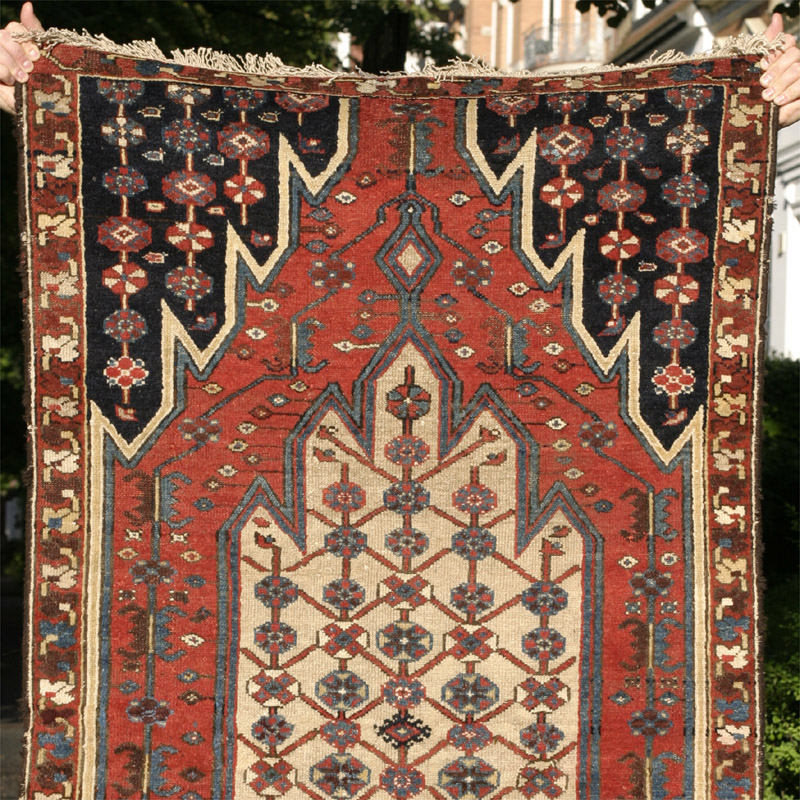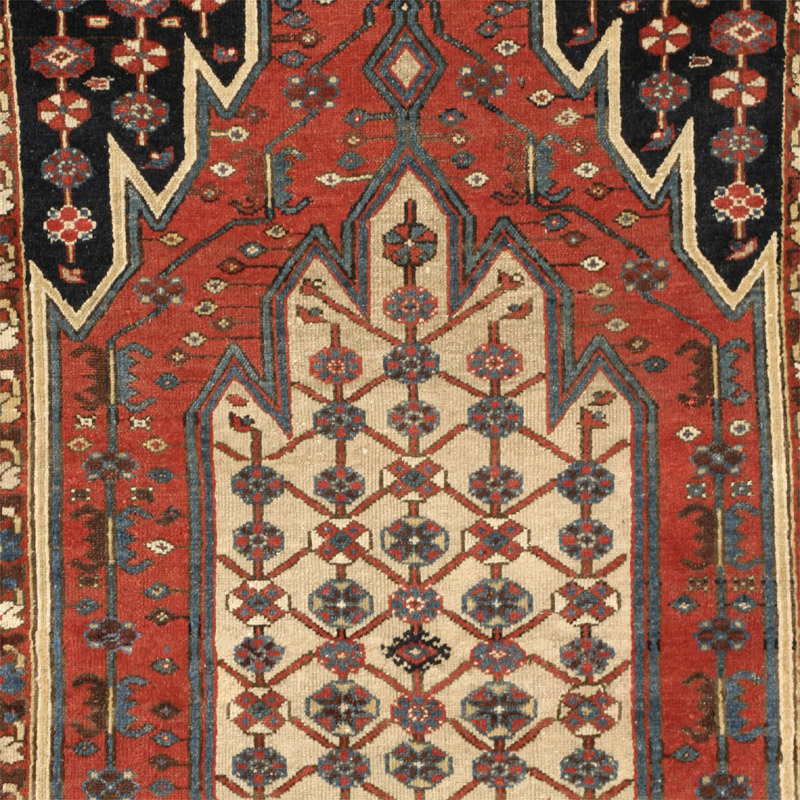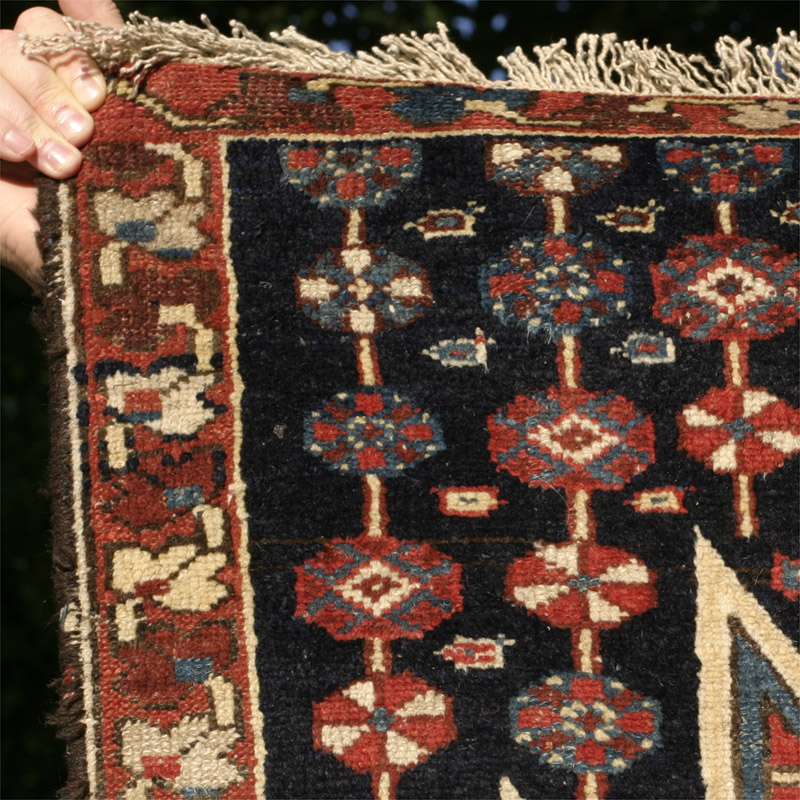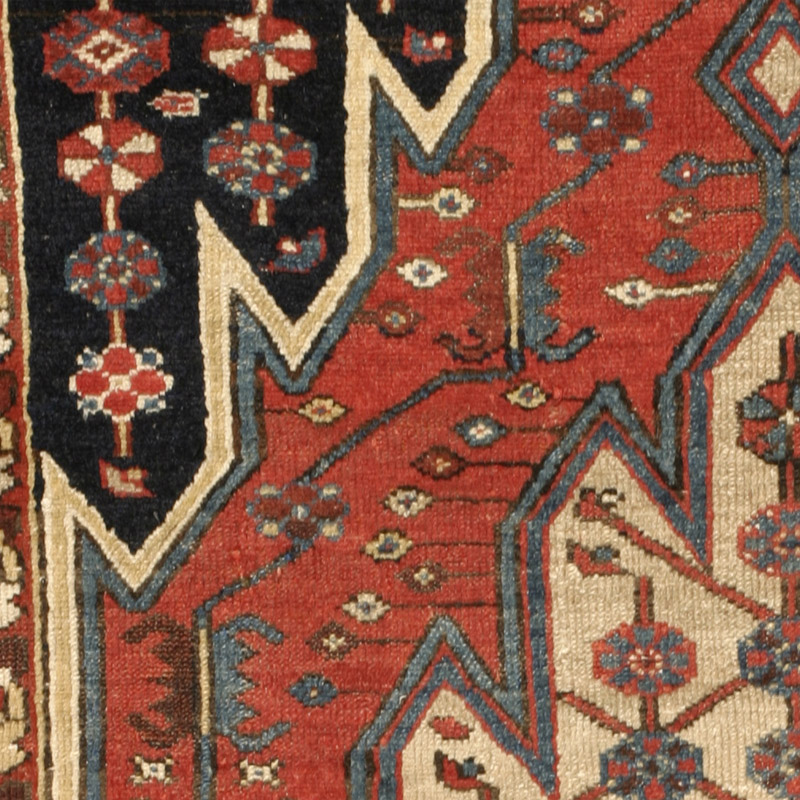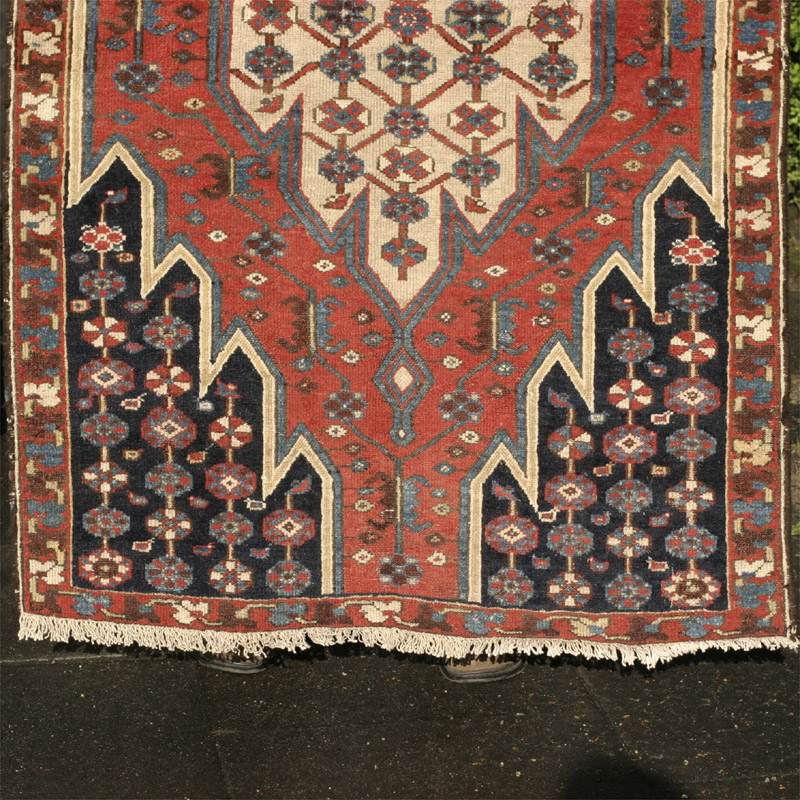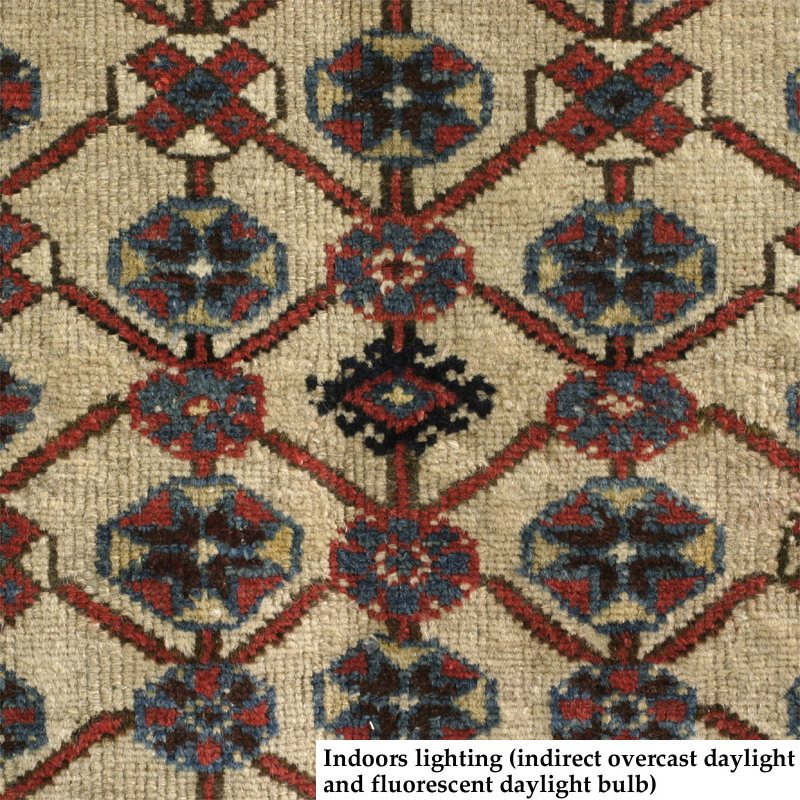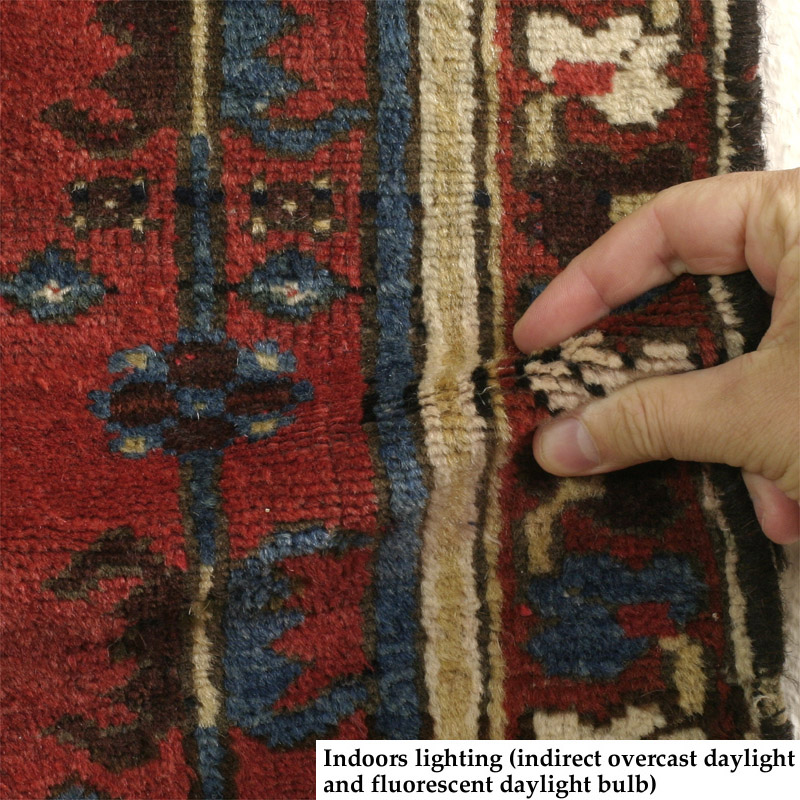The rug with this design, marked by a 'lightning bolt' outline between dark blue corners and red field as well as between the field and the white ground medallion, are typicaly called Mazlaghan (Maslaghan, Mazlahan) even though according to P.R.J. Ford, this design was actually woven in several villages (Kerdar, Noberan and Maslaghan), in the Taleghan area, and by the Kurdish Kakaberu tribe in the Senneh area (a tribe no one else talks about—did it ever exist?) where it would be double-wefted. Looking at Willborg's Hamadan book, similar blunted lightning outlines can also be found on Zarand rugs (near Saveh) further to the east.
The dark blue corners show rosettes lined up on a vertical lattice. Noteworthy are the tiny elements between the rosettes, some of which look a bit like speech balloons. In the while medallion, similar rosettes are placed over a diagonal lattice that ends in some places in small tulip flowers, some disconnected. One central flower differs from the rest, looking more like a hooked diamond.
Interesting is the serrated motive lined up on a geometric tendril encircling the medallion. It seems derived from serrated sickle leaves which are placed back to back, having lost their connection to the tendril and assumed a more static, even heraldic character.
The design is nicely rendered, the colours all based on saturated natural dyes. The rug has still quite good pile with even wear in some places quite low (see detail images).
In terms of the weaving area, Mazlaghan is (was?) a village ca. 90 km east of the city of Hamadan. The Hamadan area is known for its sturdy and rustic single-wefted rugs. Wile quality has deteriorated since the 1930's, with synthetic dyes taking over, the old rugs like this one can be very pleasing.
Strictly speaking, this rug should be called a fragment (some probably thin outer border has been cut off at some point, and a vertical stripe of three knots width outside the main border has been wrapped in brown wool to form a new selvage). This is not immediately obvious, because no inner secondary border exists. Given the growing profusion of narrow borders in more recent rugs, this could be an indication that this Mazlaghan is quite old, may be dating before 1900. I feel the simplicity of a single main border works quite well to show off the bold lightning pattern design. Many small details prevent the design from appearing formulaic, such as the various small stems with buds extending horizonally into the red field from the sides and the medallion.
The Mazlaghan rug measures 6ft.5in. x 3ft.1in. (197 x 95 cm). It is cotton-based and single wefted as is common for Hamadan rugs. Symmetrical knots. The knot count is ca. 7.h x 9.v = 63 kpsi.
Sides probably reduced, perhaps only by a thin minor border. Ends probably also reduced and secured. otherwise, I can see no damage, no holes or cuts. The back has some small stains, nothing significant though.
All fine natural dyes. The indigo blue in the corners is very dark. Particularly nice is the light yellow used in the outline of the red filed and in the details of many blossoms, as well as a dark aubergine.
